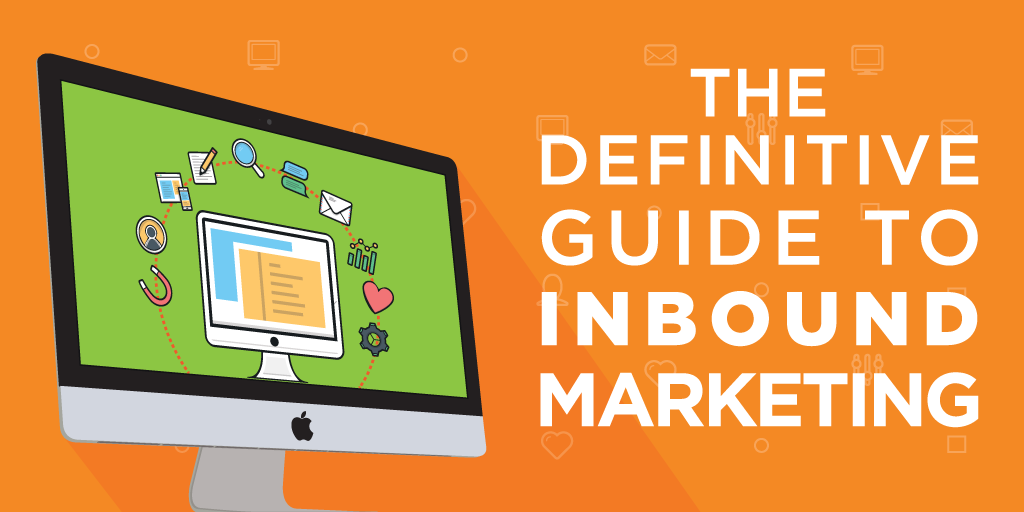Assignment Selling Tools & Technology for Your Company
by Keith Gutierrez on Apr 26, 2023
Closing deals in today’s market is one of the most frequent challenges in any industry. If you're having difficulty in this aspect, you're not the only one.
This is where assignment selling comes into play.
Assignment selling is a sales strategy that provides potential customers with a personalized and in-depth solution to a problem they face.
The idea behind assignment selling is to create a series of steps to move prospects closer to the sale.
You give prospects the task or “assignment” of reading or watching educational content about your solution, which helps them understand the value of your product or service. This approach saves time and resources for both the buyer and the seller.
Selling to modern buyers who are more educated and want to be in control of the sales process is becoming increasingly complex. To succeed, you need the right technology and tools.
As HubSpot reports, 78% of sales pros say their CRM effectively improves sales and marketing alignment.
Of those who leverage a CRM, 22% identified “helping you understand your customers and their needs” as one of a CRM’s most significant benefits.
You can see why sales tools are essential to the sales process. They help companies streamline operations, increase efficiency, and stay competitive.
In this blog post, we'll explore the essential technology and tools you need to optimize each step of the sales process and improve your chances of success.
We’ll cover the types of tools that help with the following sales activities:
- Internal sales team communication tools
- Following up with qualified opportunities tools
- Customer interactions during and after sales tools
Whether you're a seasoned sales pro or switching from a spreadsheet to a CRM, keep reading to discover the must-have technology and tools to be successful with assignment selling.
Exploring the Importance of Technology and Tools in Sales Processes
“What new technology does is create new opportunities to do a job that customers want done.”
– Tim O’Reilly
Using sales technology is crucial to the success of your assignment selling strategy for a variety of reasons; let's take a closer look:
- Efficiency: Tasks related to assignment selling can be automated, making the process more efficient. For example, advanced CRMs with automation tools can help sales teams manage their leads and communicate with potential customers.
- Accuracy: Sales teams can gather accurate information about prospects, track their behavior, and analyze data to identify trends and opportunities. This information can help tailor the approach to each prospect, increasing the likelihood of a successful sale.
- Scalability: Managing sales assets and pipelines becomes more challenging as a business grows. With the right tools, sales teams can effectively manage a higher volume of qualified opportunities.
- Communication: Email, video conferencing, and chat apps make it easier for sales teams to communicate with prospects, answer questions, and provide support throughout the sales process.
- Competitive advantage: In a competitive market, businesses investing in technology that improves their sales process will likely stand out and succeed. Adopting new technology can help companies to stay ahead of the curve and remain competitive.
Technology is necessary for successful assignment selling because it helps sales teams work more efficiently, gather accurate information, scale their efforts, communicate effectively, and gain a competitive advantage.
If you know what content your prospects engage with, you’ll better understand what they’re looking for, communicate what you can offer, and, hopefully, close the sale.
Can a Lack of Useful Tools Prevent the Success of Your Assignment Selling Strategy?
As an industry evolves, staying up-to-date with the latest technology is crucial to remain competitive and successful.
It's worth exploring how a lack of technology can impact the success of your assignment selling strategy.
Let's take a closer look:
- Inefficiency: Without the proper tools, the sales process can quickly become time-consuming and inefficient. Manually tracking leads in a spreadsheet and managing communication in individual inboxes can slow down the entire process.
- Inaccuracy: Manual processes can also lead to errors and inconsistencies in data collection and analysis, which can negatively impact the accuracy of sales forecasts and lead to missed opportunities.
- Limited scalability: Manual processes can only handle a limited number of leads, hindering scalability. As your business grows and leads increase, manual processes become more challenging.
- Poor communication: Without modern communication tools, sales reps can’t keep up with customer inquiries and provide timely support, leading to lost opportunities.
- Competitive disadvantage: In an industry where many businesses use technology to optimize their sales strategies, companies that fail to do so can’t keep up with the competition and may lose potential customers to more communicative competitors.
Failing to invest in the right sales technology can significantly disadvantage your business, reduce efficiency, accuracy, and scalability, and hinder communication.
By embracing the latest sales tools, you can stay ahead of the competition, streamline your sales processes, and improve your business's overall success.
Related: How to Use Content in the Sales Process [Assignment Selling]
Tools to Help Improve Communication and Collaboration Within the Sales Team
Internal communication and collaboration play vital roles in assignment selling.
They help ensure the sales team is aligned, informed, and working towards the same goals.
Effective internal communication enables the team to understand buyer behavior, which can be crucial for tailoring sales strategies and messaging to meet their needs.
Sales teams can share their knowledge and experiences with customers, transfer knowledge of what content works in the sales process, and make improvements where necessary.
Communicating wins and losses can provide valuable feedback for the team, enabling them to refine their strategies and tactics.
Consistent communication fosters a sense of teamwork and camaraderie, which can motivate the sales team to achieve better outcomes.
Overall, internal communication is essential for ensuring the sales team is coordinated, informed, and empowered to succeed in their assignment selling efforts.
Several tools can be used for internal communication, including:
- Messaging and chat applications enable sales teams to communicate in real time, share files, and collaborate on projects. Slack, Microsoft Teams, and Zoom Chat are great tools to consider.
- Cloud-based shared document tools, like Google Docs and Microsoft OneDrive, facilitate collaboration among team members. This allows them to work on the same documents simultaneously and share information quickly, reducing duplication of effort.
- A content repository can be a centralized database of sales assets shared with prospects at different stages of the buyer's journey to help teams stay organized and give prospects the right content at the right time. Google Sheets is an excellent option for this type of document.
- Project management tools help sales teams to organize tasks, assign responsibilities, and track progress. Tools such as Asana or Trello facilitate efficient communication and enhance productivity.
- Video conferencing tools allow sales teams to hold virtual meetings and offer screen-sharing capabilities, enabling team members to collaborate and share information in real-time. Try them out if you're not using Zoom or Microsoft Teams.
These tools allow sales teams to communicate effectively, share information, and collaborate seamlessly, making achieving their sales goals easier.
As a result, everyone on the team can access the latest information, ensuring seamless teamwork.
Utilizing Tools to Follow Up with Prospects
In industry, lead nurturing, and follow-ups are crucial elements of a successful assignment-selling strategy.
For example, if a lead looks at a piece of content in the late stage of the buyer’s journey, like a guide to buying a specific product, they’re probably close to making a purchasing decision.
You’ll want to track content engagement behaviors so salespeople can follow up with the right content at the right time.
With the proper tools, you can personalize communication with leads and ensure timely and effective follow-ups, ultimately leading to higher conversion rates and revenue.
Following up with valuable content is critical for building and maintaining relationships with potential buyers in the assignment selling process.
- Assignment selling content enables sales teams to be helpful and informative rather than just focused on closing the sale.
- Assignment selling content allows sales teams to provide valuable information and answer questions, demonstrating expertise and building trust with potential buyers.
- Assignment-selling content empowers buyers to take control of their purchasing decisions, allowing them to make informed choices based on the knowledge they acquire and the questions they ask.
Related: Why You Need Content Marketing for Your Business
Sales teams can target prospects most likely ready to buy by following up with those who have shown interest by engaging with content.
This targeted approach can increase the chances of a successful sale and create a positive experience for the buyer, leading to increased customer satisfaction and potential referral business in the future.

Here are some tools sales teams can use to follow up with prospects:
- Video recording & tracking tools allow you to send prospects personalized 1:1 videos during sales. You can use your webcam to record the video; these tools will track views and engagements. Check out Vidyard and Wistia.
- Screen recording tools allow you to create video content like product demos or tutorials while sharing your screen. Loom and ScreenPal are great tools to look into.
- Advanced CRMs allow you to track and manage your link clicks and engagement data with your customer data, giving you a more comprehensive understanding of your audience and their behavior. If you are looking for a CRM with this capability, look at HubSpot.
- Social media platforms are used to engage with potential buyers and share relevant content. Sales and marketing teams can use these platforms to build relationships and establish themselves as thought leaders in their industry. Choose platforms where your ideal customer hangs out, like Facebook and Instagram.
Related: Mastering Social Media: Tips for Companies
Incorporating technology and tools for lead nurturing and follow-ups is crucial for businesses to efficiently manage leads and increase their chances of converting them into paying customers.
By utilizing these resources, companies can enhance their communication, tracking, and analysis capabilities, resulting in improved revenue and business outcomes.
Managing Customer Interactions and Tracking Progress
Post-sale customer interaction and tracking successful deals are crucial for assignment selling.
Sales teams can continue to educate buyers post-sale on how to take care of their products, learn from wins and losses, and build a loyal customer base with valuable referrals.
Additionally, gathering customer feedback enables sales teams to identify areas for improvement in the sales process.
By understanding the customer's experience and identifying pain points, sales teams can adjust and improve their approach, increasing future customer satisfaction and loyalty.
Here are sales tools that will help you keep track of your customers and improve your processes:
- Advanced CRMs help track customer interactions, sales activities, and customer data. You can keep track of wins and losses to refine your sales strategy. Beneficial CRM tools include Salesforce and HubSpot.
- Email automation and tracking software allow you to send automated follow-ups to continue educating buyers post-sale. This is especially useful when your product has a long lifetime and you want to stay top-of-mind. Additionally, you can track whether a customer has opened or clicked on an email. Email tracking tools include Mailchimp, HubSpot, and Yesware.
- Content Management Systems (CMS) allow you to create, manage, and publish content to the web. A CMS with revenue attribution will allow you to see what content pieces contributed to a deal. Examples of this include HubSpot, WordPress, and Joomla.
- Social media monitoring tools help you track customer interactions on social media platforms. This can help identify opportunities for engagement or address any customer concerns. Look at these tools, including Hootsuite and Sprout Social.
- Customer feedback tools allow you to collect customer feedback on their experience with your product or service. This feedback can be used to improve the customer experience and identify areas for improvement. Check out these customer feedback tools, including SurveyMonkey, Qualtrics, and Google Forms.
Using these tools, you can effectively track customer interactions and identify opportunities to serve your future customers better while providing a better customer experience, ensuring timely communication, and increasing customer satisfaction.
By analyzing customer interactions and sales performance data, sales teams can make data-driven decisions and optimize their sales processes.
Final Thoughts
Tools and technology are essential for any sales strategy but are especially important for assignment selling, where the first priority is educating the customer.
From optimizing internal communication to following up with prospects at the right time with the right content to ensuring post-sale satisfaction, sales tools help companies streamline processes, increase efficiency, and stay competitive in the industry.
Leveraging the right combination of tools can improve your sales process and drive more sales. Sales teams can work more efficiently and effectively, improving customer and business outcomes.
So, whether starting with assignment selling or looking to take your sales team to the next level, consider investing in the right technology and tools to help you achieve your goals.
Have questions?
Schedule some time to talk with us today!
Share this
Sign up for blog updates!
Related Stories

What is Inbound Marketing? The Definitive Guide for 2021

Lead Nurturing: How to Create Demand and Engage Prospects (With Examples)


Leave a comment
Let us know what you think